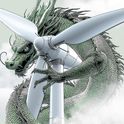A history teacher of mine used to tell his pupils that he was teaching us scepticism—a habit of thought—rather than information. A wiry, brusque New Englander, he had us pore over first-person accounts of the first shot fired in the American revolutionary war. We concluded that this original “shot heard round the world” came neither from English nor American forces, but was likely fired by a farmer, an anonymous onlooker from the environs of Concord, Massachusetts. It was a pleasingly uncertain solution.
Years later, the same teacher took advantage of a Saturnalian program at our school. Teachers were invited to attend classes with their students, 60-year-olds at desks next to 14-year-olds. My old teacher put aside any scepticism about the capabilities of age. He chose to study algebra, but sadly, by all accounts, barely passed.
Maths poses difficulties. Like nature, its starkness is its beauty. There’s little room for eyewitness testimony, seasoned judgment, a sceptical eye or transcendental rhetoric. With maths, even if I wanted to, I couldn’t spare a teacher’s dignity by commenting, “What an interesting conclusion!”
I had strong anti-mathematical and sentimental leanings as a child. Maths seemed to reduce pretty things like the moon and roses to ugly things like orbital periods and Mendelian tables. It took a while to recognise the ignorance of those judgements. As an adult I came to love mathematics and studied with great pleasure but little talent. A friend gave me Rózsa Péter’s wonderful Playing with Infinity. Written in 1943, the book is still the most successful overview of maths for the not-so-mathematically-gifted. I’ve sent a copy to a man on California’s death row at San Quentin. He later wrote to me, “I do like this book. I’ve learned more than I thought I would. I realise I’ve been doing stuff the hard way when there is a much easier method. Thanks a lot, American public education!”
How I know a murderer ashamed of his education is a complicated story. Suffice it to say, I once decided to teach maths to prisoners. Surprisingly, many of them embraced prison discipline to study for the General Educational Development (GED) test, an examination taken by those without a high school diploma. Once released, they’d need a GED to apply for a job.
Normally in America, the study of mathematics is the business of teenagers: Algebra I, Algebra II, Geometry, Trigonometry, Calculus. But few complete these before college, where they often stop studying maths altogether.
I riffled through the folders of worksheets in my prison classroom. My students, even if well beyond their teens, were struggling with the basics: addition, subtraction, multiplication, division, fractions, the decimal system, averages. They were frankly embarrassed by their backwardness.
Dealing with the dignity of these prickly men required finesse. Unlike a Connecticut boarding school, prison isn’t a place where a 60-year-old doggedly studying algebra will be indulged and commended. My students narrowed their eyes at the childish-looking worksheets with line drawings of elves folding their arms or tapping their toes in astonishment at basic equations.
I handed out stubby little-kid pencils (and had to collect them at the end of every class so they couldn’t be palmed and made into weapons). I didn’t know what I was doing, but I was standing there and had their attention, so I “taught.”
We learn the basics of maths when we’re very young. We don’t have much reason to think about them later. Through teaching I had the chance to look at the tools of maths every day. They’re astonishingly beautiful.
The limpid act of adding or subtracting one and one is the foundational event of mathematics according to the Dutchman LEJ Brouwer, an Intuitionist outlier who imagined math as “an essentially languageless activity of the mind having its origin in the perception of a move of time. This perception of a move of time may be described as the falling apart of a life moment into two distinct things, one of which gives way to the other, but is retained by memory.” (Brouwer’s prose and politics were both hideous.) Though a mathematician friend of mine says that Intuitionism has proved uninteresting and barren, I always liked the idea of building all of maths from the human experience of a moment of time.
Beyond Brouwer’s intuited addition/subtraction are the “distributed” adding and subtracting of multiplication and division. These form the grand entrance to mathematics. Already the double nature of the subject may strobe in one’s thoughts: is this thing—mathematics—a discovery or an invention, the setting for a temple, or the temple itself?
As soon as you begin to form mathematical sentences using the embryonic quartet of functions, maths does start to look almost exactly like a language. The mystically concise fractions and the decimals with their murmurous infinities of digits are like number dialects. Yet it’s a language which, when spoken correctly, is always true.
Obviously, that’s not exactly what I taught. But as I went over the basics, I kept getting pleasurable glimpses of this mathematico-philosophical world of pure thought, as free and remote from my life as mine was from theirs. I congenially made fun of the elves and drilled my students on examination problems. They weren’t there for the beauty or Brouwer. Still, if only to be clear, I had to point out the uncanny complementarity of the functions or the way the same-but-different 0.5, ½, and 50 per cent were like superimposed crystals.
I remember one student’s involuntary hiccup of enthusiasm and understanding. He perked up in his chair with a little exclamation and grinned at me fondly. The other students eyed him with irony, and a soft chuffing filled the room as they snorted. The young man’s tiny “life moment” free of self-consciousness fell apart into two distinct things at once. He slouched warily and never spoke after that. It was like witnessing an invisible murder.
Later I taught the same material to a much less self-conscious group. These were long-in-the-tooth dropouts. They had job applications in mind, too, but they were more curious and willing to peer across the glassy, abstract region of mathematics. That’s what I wanted. With them I could be a tour guide and not simply teach a drab handful of methods.
I’d re-learned maths myself as a kind of tourist or traveller. Instead of the disconnected and seemingly arbitrary techniques I’d studied in the odd moments between recess and leaf collecting and dinosaur books, I found maths a unified country, sober and dazzling, when I returned to it as an adult. My mind could voyage from one part to another, enjoying how things lined up from this angle or how it all worked in a slightly different manner over here.
Among the drop-outs I taught was a canny, severe, much-pierced, black-haired woman who had the manners of a tough older sister. She particularly approved when I’d get stuck working on a problem myself. She patted me on the shoulder and said, “I like it how you don’t pretend to know everything.” She explained that her ex-teachers nervously insisted on the pretence of flawless knowledge. It wasn’t so different from snobbery. I said it wasn’t the knowledge itself that was valuable—though she was going to have to master enough for her GED—it was, as my history teacher used to insist, the habit of thinking clearly.
I demonstrated this by showing her a habit I had when adding columns of numbers on a piece of scratch paper. Pen in hand, I wrote the digits in a column and made a bold line underneath. I “added” this way: I tapped the point of my pen on the paper the number of times represented by the digit I want to add. With “3” I tapped the three points of the written Arabic numeral. With “4” and “5” I tapped four or five imaginary sections of each numeral. With numbers like “7” I tapped a little figure of dots off to the side.
As she watched my monkey-like literalness, my student appeared to doubt me as a math teacher. I argued that this was a primitive but pretty way of thinking mathematically. With my taps I was drawing the numerals out in time and space. I was translating the numeric abstractions of the column of Arabic numerals into an intuitive, music-like beating of time, a 1+1+1+1+1 of which even Brouwer would approve. And besides this music of time, I’d also produced the tiny geometric figures my tapped points formed. Simplistic as it appeared, here was the multidimensionality characteristic of mathematical understanding. My student, who was much more talented than I, was soon capable of finding other, beautiful mathematical relationships—some I hadn’t even noticed myself.












